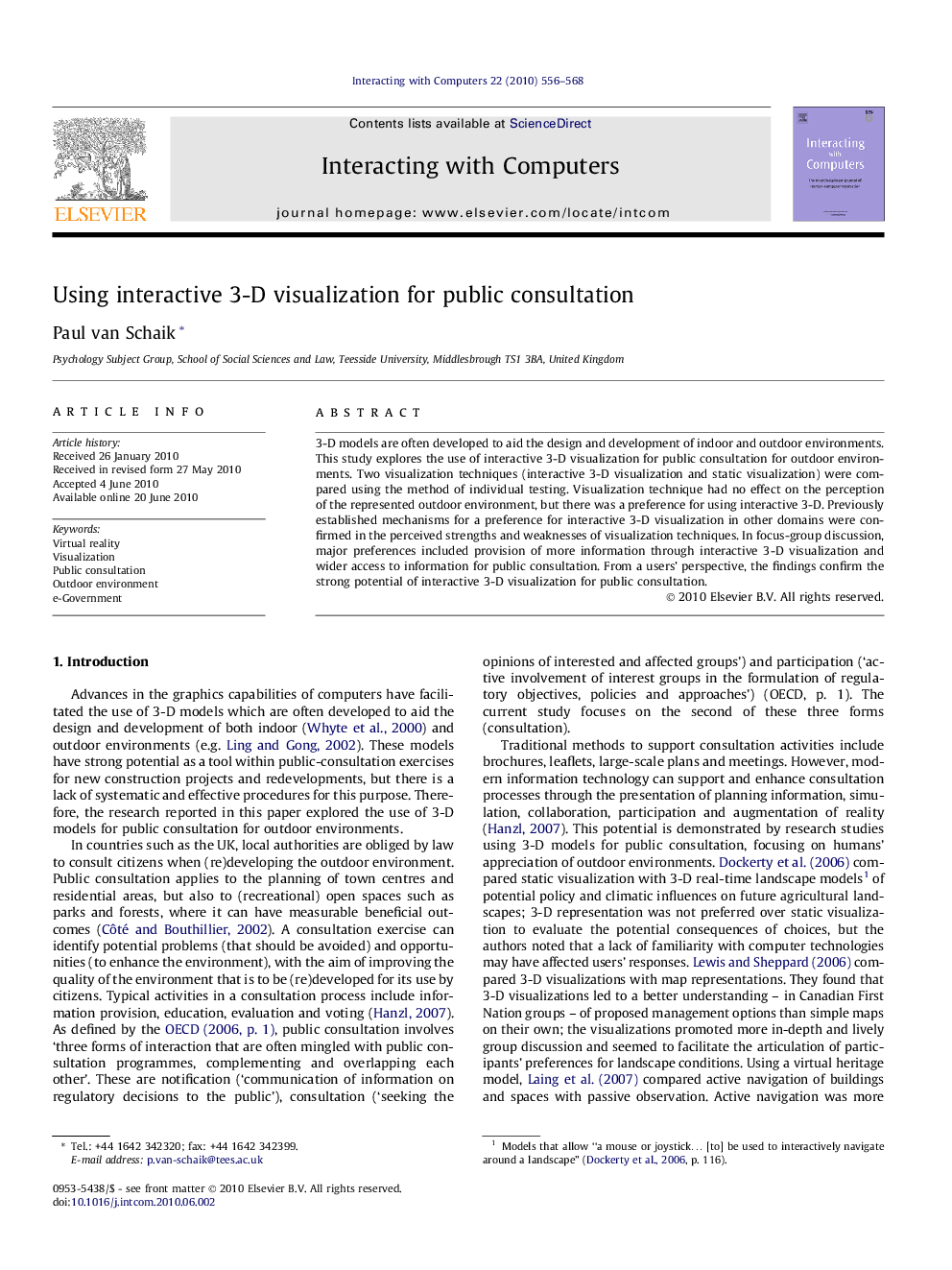| Article ID | Journal | Published Year | Pages | File Type |
|---|---|---|---|---|
| 553049 | Interacting with Computers | 2010 | 13 Pages |
3-D models are often developed to aid the design and development of indoor and outdoor environments. This study explores the use of interactive 3-D visualization for public consultation for outdoor environments. Two visualization techniques (interactive 3-D visualization and static visualization) were compared using the method of individual testing. Visualization technique had no effect on the perception of the represented outdoor environment, but there was a preference for using interactive 3-D. Previously established mechanisms for a preference for interactive 3-D visualization in other domains were confirmed in the perceived strengths and weaknesses of visualization techniques. In focus-group discussion, major preferences included provision of more information through interactive 3-D visualization and wider access to information for public consultation. From a users’ perspective, the findings confirm the strong potential of interactive 3-D visualization for public consultation.
Research highlights► People prefer interactive 3-D visualization over static paper-based visualization for public consultation. ► Mechanisms for perceived strengths and weakness of interactive 3-D visualization for public consultation include visual and behavioural affordances. ► Interactive 3-D visualization for public consultation should be used to provide additional information and wider access to information.
